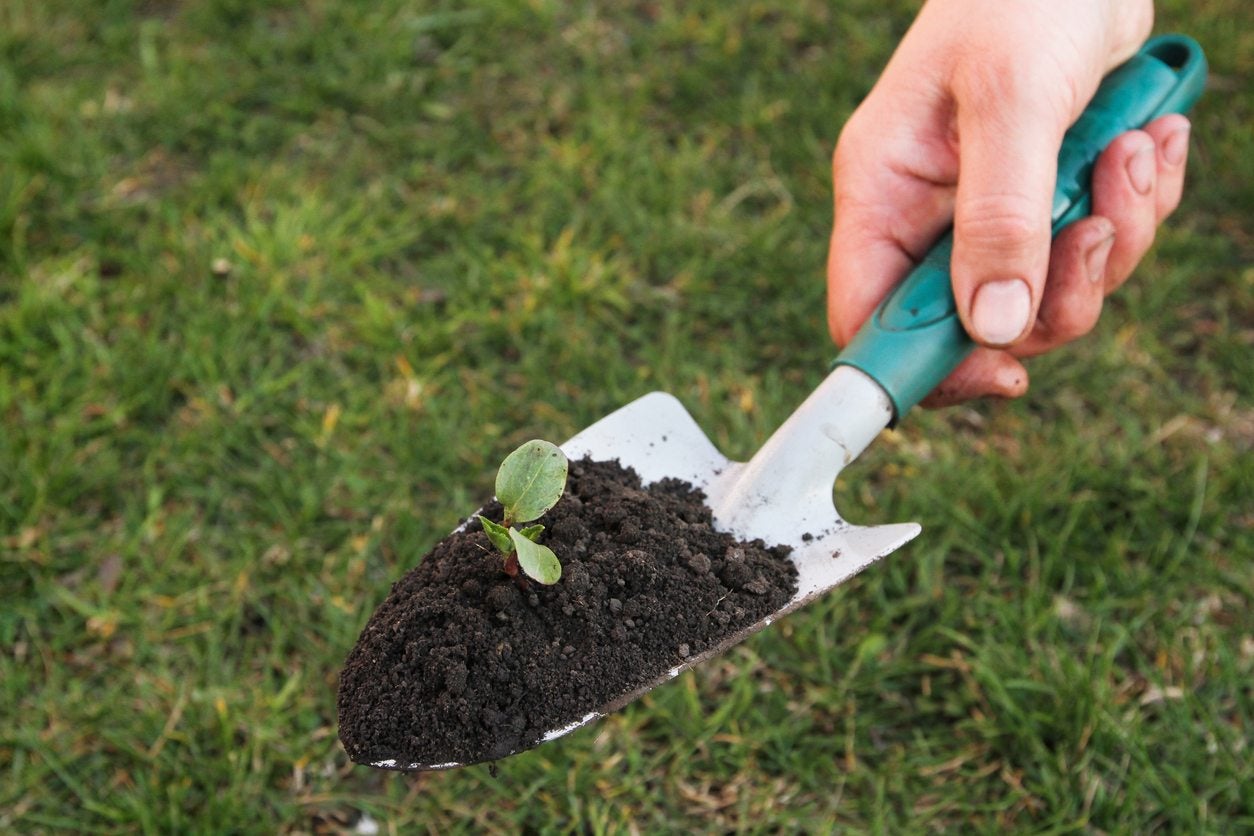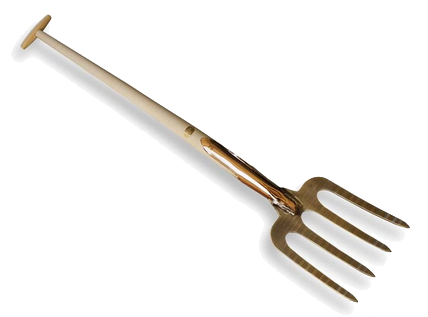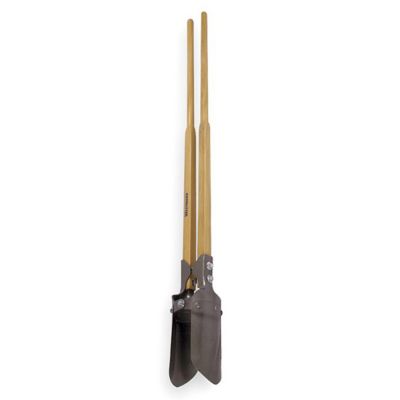The Hole Digger's Guide To Planting The Perfect Tree
The Hole Digger's Guide to Planting the Perfect Tree
Introduction
Planting a tree is a rewarding experience, but it's important to do it right. By following a few simple steps, you can ensure that your tree has a healthy start and will grow into a beautiful addition to your landscape for years to come.
This guide will walk you through the entire process of planting a tree, from choosing the right spot to preparing the soil to watering and fertilizing your new tree. By the time you're finished, you'll be a hole digger pro!
Choosing the Right Spot
The first step is to choose the right spot for your tree. Consider the following factors when making your decision:
- Sunlight: Trees need at least six hours of sunlight per day. If you live in a shady area, choose a tree that is known for its tolerance to shade.
- Soil: Trees need well-drained soil. If your soil is sandy or clayey, amend it with compost or other organic matter to improve drainage.
- Space: Trees need room to grow. Make sure to choose a spot that is large enough for your tree to reach its mature size.
- Utilities: Avoid planting trees near underground utilities, such as power lines and sewer lines.
Preparing the Soil
Once you've chosen the right spot, it's time to prepare the soil. The soil should be loose and crumbly so that the roots can easily spread out. If your soil is compacted, loosen it up with a shovel or garden fork.
Add some compost or other organic matter to the soil to improve drainage and fertility. The depth of the hole should be equal to the depth of the root ball, plus an additional 6 inches. The width of the hole should be twice the width of the root ball.
Planting the Tree
Carefully remove the tree from its container and place it in the hole. Make sure that the top of the root ball is level with the surrounding soil. Backfill the hole with soil, tamping it down gently as you go.
Water the tree thoroughly. Be sure to water your tree regularly, especially during the first year after planting.
Mulching
Mulch around the base of the tree to help retain moisture and suppress weeds. A 2- to 3-inch layer of mulch is ideal.
Fertilizing
Fertilize your tree in the spring and fall with a balanced fertilizer. Follow the directions on the fertilizer label carefully.
Caring for Your Tree
Water your tree regularly, especially during the first year after planting. Mulch around the base of the tree to help retain moisture and suppress weeds. Fertilize your tree in the spring and fall.
Prune your tree as needed to maintain its shape and size. Remove dead, diseased, or damaged branches.
Watch for pests and diseases. If you see any problems, consult with a professional arborist.
Conclusion
Planting a tree is a great way to add beauty and value to your property. By following these simple steps, you can ensure that your tree has a healthy start and will grow into a beautiful addition to your landscape for years to come.
Are you looking for a hole digger for plants? If so, you've come to the right place! Garden Wiki is a great resource for all things gardening, including a wide variety of hole diggers for plants.
Whether you're looking for a hand-held dibber for small plants or a power auger for large trees, Garden Wiki has the perfect hole digger for you. Their team of experienced gardeners can help you choose the right tool for your needs and budget.
In addition to their wide selection of hole diggers, Garden Wiki also offers a wealth of information on gardening. Their blog features articles on everything from plant care to pest control. You can also find gardening tips and tutorials on their YouTube channel.
So whether you're a beginner gardener or a seasoned pro, Garden Wiki is the perfect place to find everything you need to get your garden growing.
FAQ of hole digger for plants
- What are the different types of hole diggers for plants?
There are many different types of hole diggers for plants, each with its own advantages and disadvantages. Some of the most common types include:
- Manual post hole diggers: These are the most basic type of hole digger and are powered by the user's own strength. They are relatively inexpensive and easy to use, but they can be tiring to use for large projects.
- Electric augers: These hole diggers are powered by an electric motor and are much faster than manual post hole diggers. They are also easier to use, as you do not have to exert as much force. However, they can be more expensive than manual post hole diggers.

- Gas-powered augers: These hole diggers are the most powerful type of hole digger and are ideal for large projects. They are also very fast, making them a good choice for landscapers and other professionals. However, they are also the most expensive type of hole digger.

- Dibblers: These are small, hand-held tools that are used to make small holes for planting seeds, bulbs, and seedlings. They are very inexpensive and easy to use, but they are not suitable for making large holes.
- What size hole do I need to dig for a plant?
The size of the hole you need to dig for a plant will depend on the size of the plant. In general, you should dig a hole that is at least twice as wide and as deep as the plant's root ball. For larger plants, you may need to dig a hole that is even larger.
- How deep should I dig the hole?
The depth of the hole you need to dig will also depend on the size of the plant. In general, you should dig a hole that is deep enough so that the plant's root ball will be at least 2 inches below the ground level. For larger plants, you may need to dig a hole that is even deeper.
- What type of soil should I use for planting?
The type of soil you use for planting will depend on the type of plant you are planting. Some plants prefer sandy soil, while others prefer clay soil. It is important to choose a soil that will drain well and that will provide the plant with the nutrients it needs.
- How do I care for a plant after planting?
After planting, it is important to water the plant regularly. You should also fertilize the plant according to the instructions on the fertilizer label. In addition, you should keep an eye out for pests and diseases and take steps to control them if necessary.
Image of hole digger for plants
- Dibbler. A dibber is a small, hand-held tool with a pointed end that is used to make small holes in the soil for planting seeds or seedlings.

- Trowel. A trowel is a hand-held gardening tool with a flat blade and a pointed end. It is used for digging small holes, transplanting seedlings, and weeding.

- Garden fork. A garden fork is a hand-held gardening tool with two or three prongs. It is used for breaking up soil, turning compost, and digging large holes.

- Power auger. A power auger is a gas-powered tool with a rotating auger bit that is used to dig large holes in the ground. It is a good choice for digging holes for trees, shrubs, and large plants.

- Post hole digger. A post hole digger is a hand-held tool with two metal claws that are used to dig holes for fence posts or other posts.


Post a Comment for "The Hole Digger's Guide To Planting The Perfect Tree"